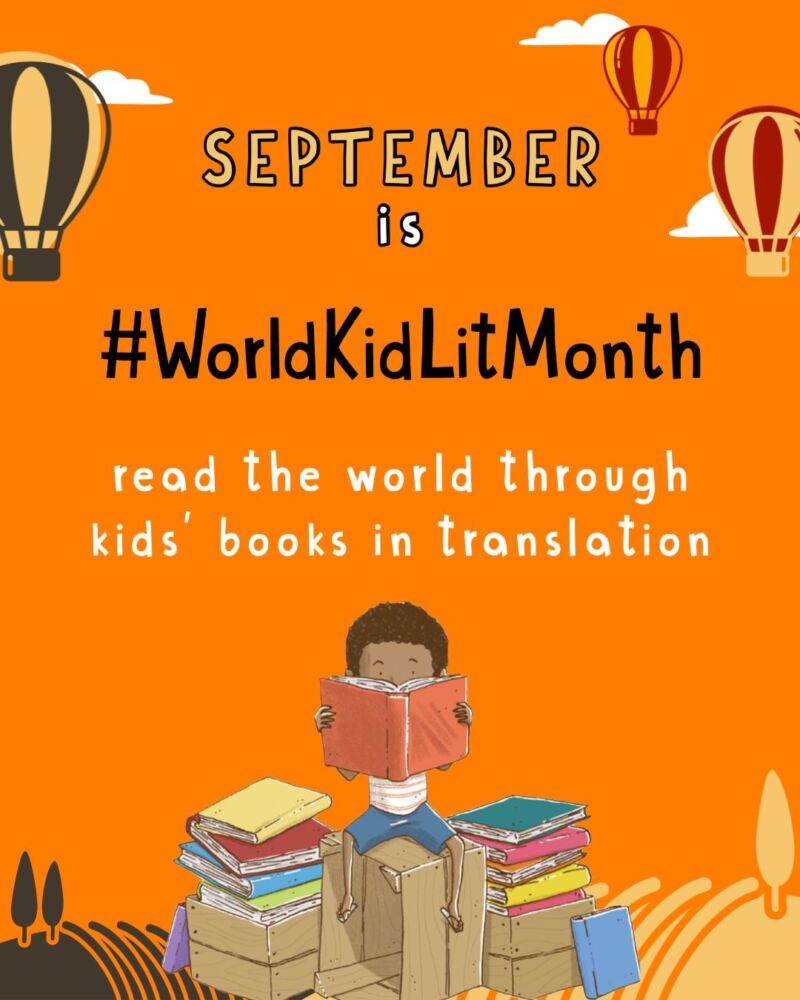Why Celebrate World Kid Lit Month?
31 August, 2023 Ruth Ahmedzai Kemp, literary translator and advocate of translated and inclusive literature for young people, introduces World Kid Lit Month: an opportunity every September to celebrate your school’s diverse language and heritage landscape through reading for pleasure.
Ruth Ahmedzai Kemp, literary translator and advocate of translated and inclusive literature for young people, introduces World Kid Lit Month: an opportunity every September to celebrate your school’s diverse language and heritage landscape through reading for pleasure.
What is World Kid Lit Month?
Every September is #WorldKidLitMonth, a global celebration of world literature and translation for children and young adults. If you’ve never read a children’s book from another country or translated into English from another language – now’s the time!
Why September? It’s a month traditionally associated with MFL and language learning: 26th September is European Day of Languages, while 30th September is both International Translation Day and St Jerome’s Day, the patron saint of translators.
A whole-school, whole-world reading journey
With school populations becoming ever more diverse, what better way to celebrate the multilingual and multicultural landscape of the school community than by discovering books from beyond our shores and first written in languages other than English?
#WorldKidLitMonth offers the chance for individual pupils, a year group or even the whole school to go on a #readtheworld adventure. It could even be the start of a year-long reading voyage!
- Each year group could take a continent and see how many books they can find that are from that part of the world, or translated from languages spoken there. Students could write book reviews for the school newsletter, for a library display, or an assembly presentation to younger year groups.
- Over on the World Kid Lit website, you’ll find a downloadable bingo chart with reading ideas. Perhaps each class could aim to complete a line in a whole-school game of bingo?
- There are many ways you could display recommended books translated from other languages on a globe or world map wall display. Using a map like this one from Cherry Creek Lane, pupils could colour in the countries or decorate the world map with book covers as they read their way around the world.
- For more ideas, see 10 Ways to Celebrate World Kid Lit Month in your school.
Don’t forget to share how you’re celebrating by posting pictures on social media with #worldkidlitmonth – another great way to find inspiration from other teachers, librarians and readers worldwide.
Where to find international books for young people?
Some of the best-loved classics of children’s literature are translations from Europe: The Moomins and Pippi Longstocking are translated from Swedish (and come from Finland and Sweden respectively); the Tintin and Asterix books are translated from French (Belgium and France), while Heidi comes to us in translation from German (Switzerland).
But what of more recent children’s books? Our research at World Kid Lit tells us that over 200 books for younger readers are translated into English every year. It was great to see that this year’s Yoto Carnegie Medals both went to books in translation, but publishers don’t always make it easy to find out which books are translated from another language. So how can you find out about children’s books that have travelled to our shores from elsewhere around the world?
On our World Kid Lit Recommends page, you’ll find a growing number of themed book lists, reading maps and links to other resources to help pupils and teachers discover great books from beyond the UK, and first written in languages other than English. You can search for books by continent or country or by source language. Since 2017, we have published an annual translation list so you can also search by year of publication or find out what’s new this year.
#Readtheworld blogs such as Kids Read the World or Juliet’s Book Journey are a great source of inspiration and we also recommend browsing sites like Outside In World and Global Literature in Libraries Initiative. You can also explore the prizes for world literature for young people, such as the ALA Mildred L. Batchelder Award.
Happy travels wherever you and your students fly with a book!
10 recommended reads for KS2
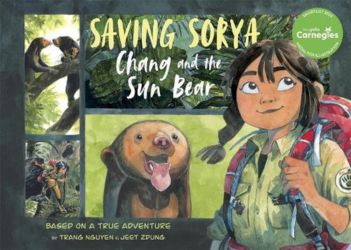 Saving Sorya: Chang and the Sun Bear by Trang Nguyen, illustrated by Jeet Zdung, translated from Vietnamese by Hoàng Duy and Jeet Zdung. Winner of the Yoto Carnegie Medal for Illustration 2023.
Saving Sorya: Chang and the Sun Bear by Trang Nguyen, illustrated by Jeet Zdung, translated from Vietnamese by Hoàng Duy and Jeet Zdung. Winner of the Yoto Carnegie Medal for Illustration 2023.
Sound: Shhh . . . Bang . . . POP . . . BOOM! by Romana Romanyshyn and Andriy Lesiv, translated from Ukrainian by Vitaly Chemetsky (Chronicle Books, 2020).
Kiki’s Delivery Service by Eiko Kadono, illustrated by Joe Todd-Stanton, translated from Japanese by Emily Balistrieri (Puffin Books, 2021).
Clementine Loves Red by Krystyna Boglar and Bohdan Butenko, translated from Polish by Zosia Krasodomska-Jones and Antonia Lloyd-Jones (Pushkin Press, 2017).
Zo and the Forest of Secrets by Alake Pilgrim (set on the Caribbean island of Trinidad) (Knights Of, 2022).
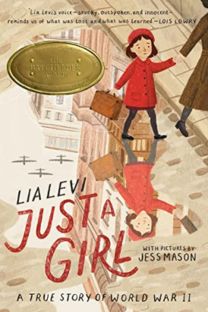 Just a Girl: A True Story of World War II by Lia Levi, illustrated by Jess Mason, translated from Italian by Sylvia Notini (HarperCollins, 2022). Winner of the 2023 Batchelder Award for children’s and YA books in translation.
Just a Girl: A True Story of World War II by Lia Levi, illustrated by Jess Mason, translated from Italian by Sylvia Notini (HarperCollins, 2022). Winner of the 2023 Batchelder Award for children’s and YA books in translation.
Mwikali and the Forbidden Mask: Intasimi Warriors Book 1 by Shiko Nguru (set in Kenya) (Lantana Publishing, 2022).
Jefferson by Jean-Claude Mourlevat, illustrated by Antoine Ronzon, translated from French (France) by Ros Schwartz (Andersen Press, 2022).
Me and the Robbersons by Siri Kolu, translated from Finnish by Ruth Urbom (Stripes Publishing, 2021).
Suee and the Strange White Light by Ginger Ly, illustrated by Molly Park, translated from Korean by Paige Aniyah Morris (Amulet Books, 2023).
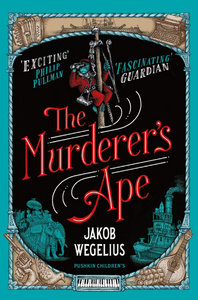 10 recommended reads for KS3
10 recommended reads for KS3
Here the Whole Time, by Vitor Martins, translated from Portuguese (Brazil) by Larissa Helena (Hodder Children’s Books, 2021). Winner of the 2021 GLLI Translated YA Book Prize.
The Murderer’s Ape by Jakob Wegelius, translated from Swedish (Sweden) by Peter Graves (Pushkin Press, 2017).
Talking to Alaska, by Anna Woltz, translated from Dutch (Netherlands) by Laura Watkinson (Rock the Boat, 2021).
The Blue Book of Nebo by Manon Steffan Ros, translated from Welsh by Manon Steffan Ros (Firefly Press, 2022).
Red Stars: The Case of Viktor and Nadya’s Notebook by Davide Morosinotto, translated from Italian by Denise Muir (Pushkin Press, 2020).
The Beast Player and The Beast Warrior by Nahoko Uehashi, translated from Japanese by Cathy Hirano (Pushkin Press, 2018 and 2020). Winner of the 2020 GLLI Translated YA Book Prize.
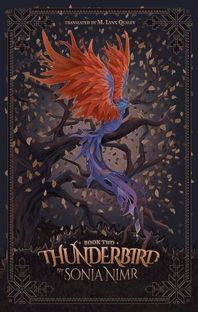 Temple Alley Summer by Sachiko Kashiwaba, illustrated by Miho Satake, translated from by Avery Fischer Udagawa (Yonder, 2021). Winner of the 2022 Batchelder Award.
Temple Alley Summer by Sachiko Kashiwaba, illustrated by Miho Satake, translated from by Avery Fischer Udagawa (Yonder, 2021). Winner of the 2022 Batchelder Award.
Thunderbird trilogy by Sonia Nimr, translated from Arabic (Palestine) by M. Lynx Qualey (University of Texas Press, 2022).
Batu and the Search for the Golden Cup by Zira Nauryzbai & Lilya Kalaus, translated from Russian (Kazakhstan) by Shelley Fairweather-Vega (Amazon Crossing, 2023).
Swordswoman! The Queen of Jhansi in the Indian Uprising of 1857 written in English by Devika Rangachari, illustrated by Amerigo Pinelli (Pushkin Press, 2021).
